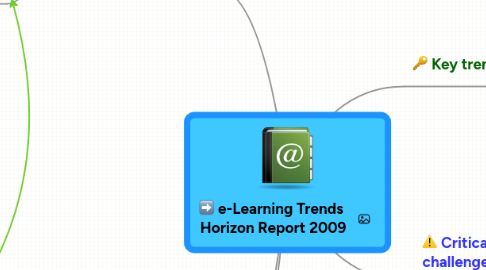
1. within 4-5 years...
1.1. semantic-aware applications
1.2. smart objects
2. within 2-3 years...
2.1. the personal web
2.2. geo-everything
3. within the next year...
3.1. mobile learning
3.2. cloud computing
3.2.1. presentations & publishing content
3.2.1.1. Google Docs
3.2.1.2. SlideShare
3.2.1.3. blogs
3.2.1.3.1. Blogger
3.2.1.4. Flickr
3.2.1.5. YouTube
3.2.1.6. Scribd
3.2.2. collaboration
3.2.2.1. social networking
3.2.2.1.1. Ning
3.2.2.1.2. Google Sites
3.2.2.2. writing & presentations
3.2.2.2.1. Google Docs
3.2.2.2.2. wikis
3.2.3. concept/mind mapping
3.2.3.1. Freemind
3.2.3.2. Gliffy
3.2.3.3. CMap Tools
3.2.3.4. MindMeister
3.2.4. screen/image capture
3.2.4.1. Jing
3.2.5. social bookmarking & citation
3.2.5.1. delicious
3.2.5.2. CiteULike
3.2.6. information visualisation
3.2.6.1. Many Eyes
3.2.6.2. Wordle
3.2.7. @ UoA
3.2.7.1. CourseBuilder
3.2.7.2. Aropa
3.2.7.3. PeerWise
3.2.7.4. Google
3.2.7.4.1. Gmail
3.2.7.4.2. Docs
3.2.8. personal web pages & RSS
3.2.8.1. iGoogle
3.2.8.2. Pageflakes
3.2.8.3. Google Reader
